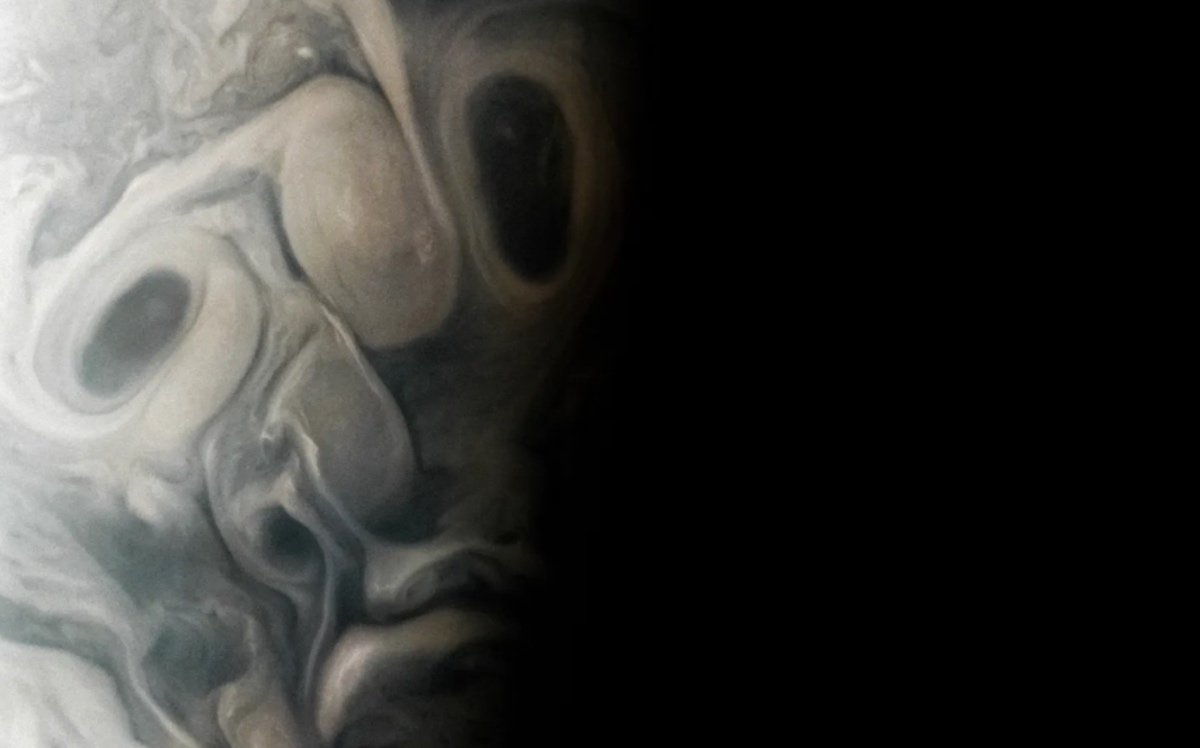NASA’s Juno spacecraft recently captured an image that bears a striking resemblance to a creepy face swirling on the gas giant’s surface.
Just in time for Halloween, many have noted the similarity between the new ghostly image and the infamous ‘Face on Mars’ first revealed in images collected by NASA’s Viking missions during the 1970s.
“On Sept. 7, 2023, during its 54th close flyby of Jupiter, NASA’s Juno mission captured this view of an area in the giant planet’s far northern regions called Jet N7,” the space agency explained in the announcement of the admittedly unusual photo. “The image shows turbulent clouds and storms along Jupiter’s terminator, the dividing line between the day and night sides of the planet.”
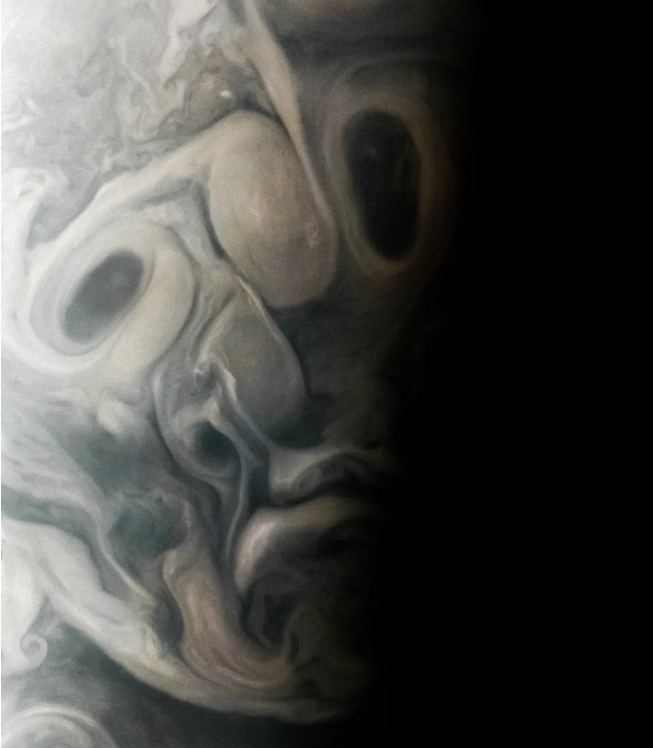

Image processing by Vladimir Tarasov
‘Face on Mars’ Was the Solar System’s First Creepy Face
As noted, the image taken by Juno is not the first time that a celestial body’s natural features have been mistaken for a massive human face. For probably as long as humans have looked at the Moon, its various craters and other features have been likened to human-like facial characteristics. However, what may be the most famous human likeness seen in space in recent decades was revealed in a photograph taken by the Viking 1 orbiter on July 26, 1976, which folks immediately noticed looked like a giant sculpture of a face staring into the heavens above the red planet.
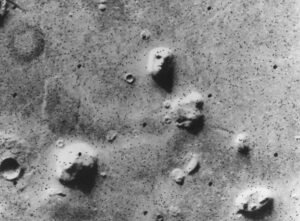

Unfortunately for believers, a series of missions in the 2000s captured higher-resolution images of the Cydonia region of Mars where the face was initially spotted, and it turned out that the face was actually just a natural rock formation. In fact, NASA combined data from three of those missions to compile a 3D rendering of the famous formation, putting the final nail in the face’s coffin.
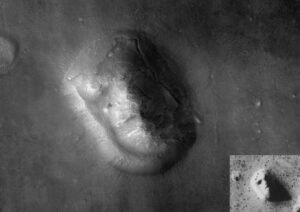

Nasa points out that the creepy face on Jupiter was created by “Citizen scientist” Vladimir Tarasov, who made the image using raw data from the JunoCam instrument. When this particular raw image was taken, the Juno spacecraft was roughly 4,800 miles above Jupiter’s cloud tops, at a latitude of about 69 degrees north. For those looking to scour the raw images produced by Juno, NASA has set up a digital library, including instructions on how to use those images.
Pareidolia and Munch’s The Scream
While photographs have shown that the Face on Mars is just a natural rock formation and the creepy face on Jupiter is merely a formation of clouds, that hasn’t kept people from comparing the two phenomena. In fact, others are even saying the image reminds them of Norwegian artist Edvard Munch’s “The Scream,” painted in 1893.
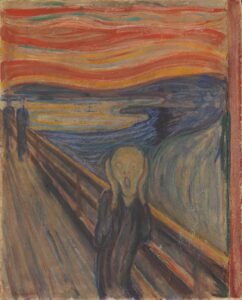

It’s a phenomenon scientists call pareidolia, like when a formation of clouds looks like someone you know or a dimly lit bush in the backyard looks like a stranger watching you.
Still, the creepy face on Jupiter is, well, creepy, which makes it the perfect Halloween gift for readers of The Debrief who are getting ready for the one day a year they can dress up as Mr. Spock and not get weird looks at the grocery store.
Christopher Plain is a Science Fiction and Fantasy novelist and Head Science Writer at The Debrief. Follow and connect with him on X, learn about his books at plainfiction.com, or email him directly at christopher@thedebrief.org.
